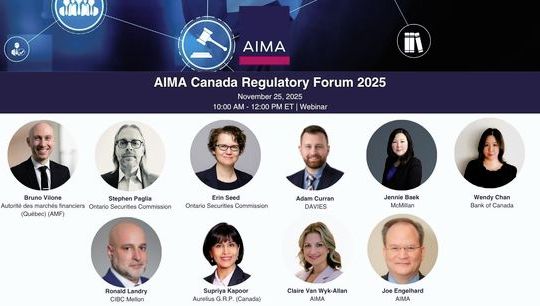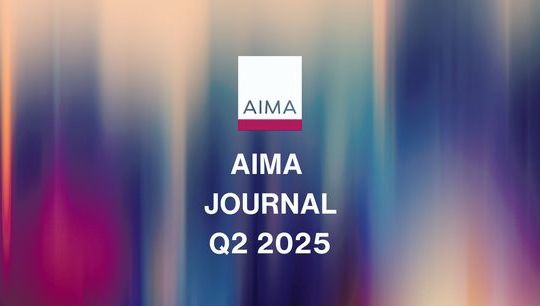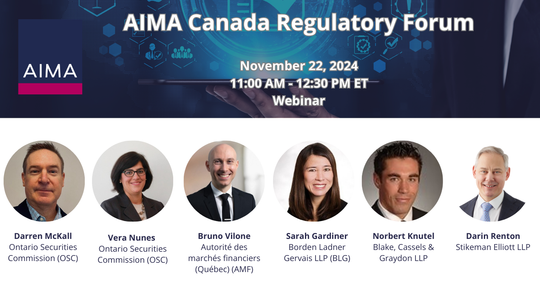Annex IV – Risk mitigation or excess regulation?
By Matt Raver, Director, and Marina Thorpe, Director, Robert Quinn Consulting
Published: 31 March 2015
One of the most challenging aspects of the European Union’s (EU) Alternative Investment Fund Managers Directive (AIFMD) is the requirement that fund managers submit an “Annex IV” report to the regulators. This article seeks to reflect upon firms’ experiences of submitting their inaugural Annex IV report and considers if this reporting will produce the desired outcomes the legislators set out to achieve.
Annex IV seeks to aggregate Pan-European data on AIFMs (Alternative Investment Fund Managers), and their funds, to assist with managing and mitigating systemic risk and so help ensure investor protection. Any EEA AIFM and non-EEA AIFMs marketing in the EEA must submit Annex IV, which is highly expansive and prescriptive. The reporting topics originate at the EU legislative level, with the specific data items disseminate by the European Securities and Markets Authority (ESMA). AIFMs have to submit the report to national EEA regulators, who are required to adopt ESMA’s data items.
The data sets required in Annex IV are extensive and span markets, instruments, exposures, risk and investors, amongst other things. Criteria based upon assets under management, marketing strategy and leverage levels, determine which sections of the form are applicable to each relevant fund (known as an Alternative Investment Fund or “AIF”). This information may need be collected and aggregated from an array of service providers such as fund administrators, custodian banks and prime brokers.
In addition, Annex IV has to be supplied not just on behalf of the AIFM but also for every single AIF managed by that AIFM. This is a significant undertaking for EEA/Non-EEA managers and EEA national regulators receiving the data. The first Annex IV filers have had a varied experience, but despite some concerns, collecting all of the disparate data sets from multiple providers was relatively straightforward. There have been some challenges for both the managers and national regulators. Annex IV deadlines are tight, one month after the end of each relevant reporting period (15 days extension for fund of funds), meaning managers may struggle to produce variable data sets, such as the Net Asset Value (NAV)/ AuM on-time.
The Financial Conduct Authority (FCA), which receives more Annex IV reports than any other EEA regulator, has been pragmatic and indicated that managers may provide information based on their best-estimated data and re-file as soon as they have obtained final figures.
The data needs to be supplied to ESMA in “XML” format. For certain EEA regulators, firms are obliged to convert the data into this format and then submit the XML file to the regulator. In addition to this, the FCA – which accepts returns via its “GABRIEL” reporting system – has created a “direct entry” alternative to the XML upload (albeit XML upload remains an option). Therefore, the FCA is effectively converting the data into the XML format on firms’ behalf. Some firms have experienced issues in formatting the data and XML conversion; therefore the FCA’s solution has enabled many firms to make a submission without requiring assistance from a third party IT provider.
Unfortunately, the GABRIEL System suffered an outage due to the sheer volume of managers filing Annex IV and other regular reports at the end of January, which was very frustrating for managers. A challenge for the FCA going forward will be to ensure the system has sufficient capacity close to filing deadlines. Given that a reduced number of reports will be submitted at the remaining quarter ends during 2015, it is possible that this will not be tested again until January 2016. It is also possible that a greater number of AIFMs will submit the return earlier in the month.
The multitude of guidelines issued from ESMA and national regulators including the FCA, complicated matters for managers. These are located on different websites and managers have had to scour through a plethora of documents/files (in differing formats) in order to find the relevant guidance and tools. One consequence of this is that it increases the risk of data requests being misinterpreted and inconsistencies in data submitted (which in turn reduces the value of the aggregate data across all managers). In the UK, there were differences in guidelines, depending if Annex IV was being filed as the XML file upload or via GABRIEL. Other glitches are technical albeit frustrating.
The FCA did struggle with its current resources to respond to enquiries in an efficient manner, as it did not anticipate such an overwhelming number of queries during the last two weeks before submission. In future the FCA may need to consider adopting a step-by-step approach towards its guidance. Having the guidance collated in one document, in one place would be extremely helpful to managers and minimise queries being raised with the FCA directly.
Some managers do need to make improvements. Problems faced during this filing should be identified promptly and corrective action needs to be taken to ensure a smooth filing process occurs for the next deadline. Whilst some firms have outsourced the reporting to their fund administrators, there have been occasional glitches and miscommunications. Again, better oversight of outsourced providers would go a long way in minimising such risks.
The big take-away, however, should be reserved for the European legislators and regulators. Annex IV filings have so far been a complex, costly and time consuming exercise. At many firms, resources were diverted away from their day to day activities, including monitoring and supervising compliance and operational risk.
The net benefit of this data collation exercise should also be closely monitored. The ambition is to minimise systemic risk. However, given that such risks are global and encapsulate investment activity external to the “alternative investment” sector, unless the data is joined up with data collated from other markets, the value of the data will be much diminished. One ambitious suggestion would be if the EU streamlined its regulatory reporting methodology and data sets with Forms PF and CPO-PQR in the US. Such an approach would ensure data is uniform and easier to collect for managers while simultaneously allowing global regulators to more effectively spot build-ups of risk in the capital markets. However, this would be a partial solution only.
One may also question the value of requesting vast amounts of data from smaller managers. In the UK, it is estimated that the 20 largest hedge fund managers account for 82% of hedge fund assets (with over 400 firms accounting for the remainder1). For example smaller managers may therefore query the merits in submitting data on monthly performance or subscriptions and redemption levels, for their USD 20 million fund. Furthermore, it is recognised in the legislation that AIFMD covers a wide range of strategies and situations. However, this is not properly accounted for in the Annex IV reports (which broadly appear to have been drafted with leveraged hedge funds in mind). Additionally, onerous reporting may be a deterrent for many non-EEA firms, due to increased legal and administrative costs.
Regulators may wish to conduct a review of all the data provided by both EEA and non EEA managers to ascertain if the data provided does in fact align itself with the purpose of AIFMD to minimise systemic risk and identify potential systemic risk. Given the amount of variables, legislators and regulators could find it difficult to compare like with like. If this is indeed the case, legislators should re-consider certain aspects of the reporting requirements and consider revising Annex IV. This should minimise the variables and make it easier for legislators and regulators to review and analyse the data obtained for relevant trends and take appropriate action sooner rather than later.
Overall, it is too soon to judge if Annex IV has resulted in the desired outcomes the legislators set out to accomplish; we have to wait and see. The legislators should have the conviction to fix this, if it is broken, by seeking to further harmonise reporting on a global scale and/or further reducing the reporting burden in low risk situations.
Industry participants may also have a role to play in encouraging these outcomes. Perhaps this is the key take-away for fund managers after all.
https://robertquinnconsulting.com/
1. FCA Hedge Fund Survey – March 2014 (http://www.fca.org.uk/static/documents/hedge-fund-survey.pdf)







